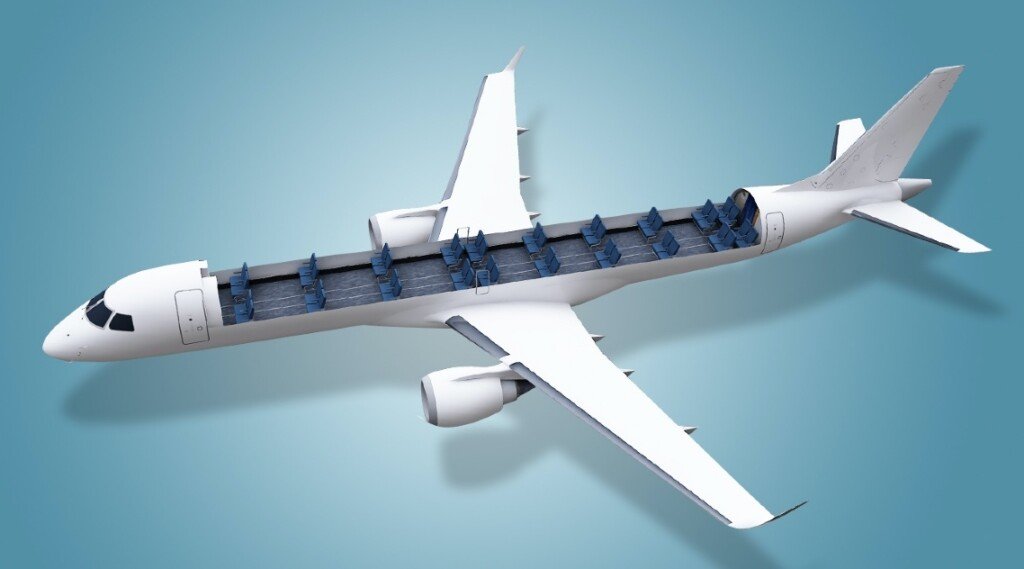Industry findings throw light on the fact that almost 200 airlines operated well over 2,500 of the so-called “preighter” flights in 2020. Interestingly, some companies have gone even further by converting their parked passenger aircraft into freighters. Global aviation data firm Cirium found that between March and December 2020, 155 aircraft had all or most of their passenger seats removed in order to transport more cargo in their cabins. With online shopping booming and an urgent global demand for vaccinations and medical supplies, it’s hardly surprising that airlines would want to make up some lost revenue by carrying cargo rather than passengers.
Upamanyu Borah
The strong demand for converted freighters has been driven by a robust cargo market, one of the few bright spots for the airline industry over the past 12 months. Since the start of the global health pandemic, freighter aircraft usage has grown strongly, mainly due to the global disappearance of belly hold capacity as passenger aircraft were grounded. The number of freighter aircraft flights peaked at more than 145,000 in December 2020 during the holiday period.
While the global freighter fleet is growing, as is the number of passenger to freighter (P2F) conversions, there has been a corresponding increase in aircraft available for conversion driven by the accelerated retirement of passenger aircraft fleets.
According to data from IBA’s InsightIQ, the number of parked or stored aircraft has increased by a factor of 2.5 between December 2019 and June 2021. This accounted for 60 different aircraft types operating in the narrow body and wide body market. The grounding of the passenger fleet caused an expected drop in the amount of cargo space available in the hold of those passenger aircraft, and attention inevitably turned to passenger to freighter converted aircraft to cater for the increased demand for transportation of freight.
With COVID having prompted capacity alterations across the industry and as newer types are entering the passenger market, aircraft being converted are coming from a wider age range and apparently sourcing adequate feedstock should not be a significant problem for most types considering readily available supplies.
Overall, since May 2020, almost 200 narrow body and wide body aircraft have joined the worldwide freighter fleet, with the active fleet of narrow body freighters growing from 61 to 625 aircraft with newly-converted B737-800s accounting for half that growth. The B757-200 remains the pre-eminent freighter aircraft with a fleet of 298 units – converted and factory delivered – followed by the B737-400, with 148.
Meanwhile, the active mid-size widebody freighter fleet has grown steeply in the same period by 80 to 624 aircraft. The B767-300ER is the dominant aircraft in this segment, accounting for more than half the growth as many ex-passenger aircraft are converted, and in total fleet size this type now stands at 315 aircraft when one adds converted and factory delivered aircraft.
The A330 freighter fleet is also growing strongly, but from a much lower base, with six aircraft converted during this period, but with an additional pool of aircraft taking its fleet size to 74, the data reveals.
The large widebody freighter fleet has mushroomed from 55 to 601 aircraft since May 2020. The re-entry into service from storage of 29 B747-400s and seven MD-11Fs accounted for around half of the growth, with the remainder made up of factory deliveries of 22 B777Fs and three B747-8Fs.
In the News!
Singaporean firms ST Engineering and Singapore’s government-run investment company Temasek are joining forces to create a new 50-50 leasing venture for converted freighters, amid a series of ongoing announcements focussed on the booming market for P2F modifications.
The venture targets to build a portfolio valued at about US$600 million within five years, investing in passenger aircraft – primarily single-aisle types – for conversion to freighters.
Prior to the news of this partnership emerging, there had been a flurry of activity in the sector. For instance, Boeing revealed it will in 2022 set up a P2F conversion facility for 737-800s in Costa Rica – the first such operation in South America in association with Cooperativa Autogestionaria de Servicios Aeroindustriales (COOPESA), a Costa Rica-based maintenance, repair, and overhaul (MRO) provider, while Israel Aerospace Industries (IAI) will in 2024 establish a modification line in Seoul, South Korea for 777-200LRs and -300ERs.
That facility will augment IAI’s initial line in Tel Aviv, where the first aircraft under the 777-300ERSF ‘Big Twin’ conversion programme it launched in 2019 with lessor GE Capital Aviation Services (GECAS) will shortly be inducted.
Most recently, Etihad Engineering, the largest commercial aircraft maintenance, repair and overhaul (MRO) services provider in the Middle East signed a strategic partnership with IAI to provide P2F conversions on Boeing 777-300ERs.
The B777-300ERSF is based on the passenger variant of the type and is expected to offer a 25% capacity increase to the smaller 777-200LRF. With the installed GE90 engines, the Big Twin will achieve up to 21% lower fuel-burn per tonne than 747-400 freighters, and big-cargo capability that sees 25% more volume than the 777-200F production freighter.
According to IAI, with the flexibility to be more profitable than the competition at high or low utilisation models, the aircraft has “the range capability to seamlessly replace aging 747-400 and MD11 freighters.
The engines were specifically designed for long-haul operations and the Boeing 777 series, providing up to 115,000 lbs of thrust. In addition to providing the engines of the aircraft, GECAS will also provide MRO engine and power-by-the-hour services throughout the lifecycle of the freighters.
“We view the 777-300ERSF as the next generation of long-haul, large-capacity widebody freighters,” said Rich Greener, Senior Vice President and Manager of GECAS Cargo had said in a statement.
“GECAS Cargo has developed a new standard for aviation lessors, leveraging our fleet of passenger aircraft to provide freighter conversion feedstock — for this 777-300ERSF program as well as converting 737-800NGs. This approach extends the useful life of our aircraft and GE/CFM engines while meeting the need for replacements of retiring freighters and increased demand for dedicated cargo capacity.”
Reportedly, US-based cargo airline Kalitta Air is set to be the launch operator of the largest-ever twin-engine Boeing 777-300ERSF freighter. Originally a 747 operator, Kalitta Air’s fleet has grown to a total of four 777F, 24 B747-400F and nine B767-300BDSF aircraft.
GECAS has also recently announced a deal to lease out six of its B737-800BCFs — two to Russian carrier ATRAN and four to an unidentified customer. ATRAN recently took delivery of two of the aircraft from GECAS and will add two more of the P2F narrow bodies to its operations in September.
GECAS will also lease two 737-800BCFs to Malaysia-based carrier Kargo Xpress, subsidiary of M Jets International. The first aircraft is set to be delivered to the Malaysia-based carrier in October this year, followed by the second one in December.
Between 737-800BCFs and 777-300ERSFs, GECAS currently holds orders and options exceeding 100 P2F conversions. Meanwhile, July Boeing market data reflected that the 737-800BCF has won more than 200 orders and commitments from 16 customers, with that number having gone up by 33% (up from 150) alone since January.
Since entering into service in 2018, the B737-800 converted freighter has consistently delivered the reliability and efficiency our customers need.
“As we reach this milestone less than three years after the first 737-800 Boeing Converted Freighter took to the skies, we at Boeing thank our customers for making the 737-800BCF the narrow body freighter of choice for meeting cargo needs around the globe,” Jens Steinhagen, Director of Boeing Freighter Conversions said in a statement.
“The success and market leadership of the 737-800BCF is a testament to superior design, as well as to the hard work and dedication of Boeing’s global team that includes our parts and MRO suppliers. As demand for Boeing Converted Freighters soars, we continue to increase our capacity to meet our customers’ needs,” he noted.
Steinhagen had previously noted that Boeing is focussed on working with its MRO partners to ensure we meet the growing market demand, which is why it added additional lines to support future capacity for both the 737-800BCF and 767-300BCF. “Any future conversion line decisions, whether with existing or potentially new partners, will be driven by a variety of factors, including the business environment and market demand.”
Whilst reports say 90 per cent of freighters around the globe are Boeing jets, Airbus thinks its conversion programme for the widebody A330 and narrow body jets like the A321 and A320 is set to take a piece of the former’s share in freighter operations worldwide.
In particular, the company is looking at the prospects of the A321P2F conversion programme which could easily rival its nearest freighter platforms.
Compared to similar class freighter models, the A321 freighter is regarded as a better option for the environment and lowering CO2 emissions, with a 20% reduction in fuel burn and its enhanced performance in range, payload, and volume capacity. The aircraft type is also acknowledged as being one of the most technologically advanced narrow body fleet types in its class.
It was reported that in May Oregon-based 321 Precision Conversions, a joint venture of Air Transport Services Group (ATSG) and Precision Aircraft Solutions was close to delivering its first Airbus A321 converted freighter. The imminent handover followed the US Federal Aviation Administration (FAA)’s issuing of a supplemental type certificate for the A321-200P2F variant in late April, paving the way for delivery to launch operator SmartLynx Airlines Malta and the ramp-up of conversions.
A similar programme is also being developed by Sine Draco Aviation Development.
On the other side of the Atlantic, Dublin-based lessor GTLK Europe is set to acquire four A321 converted freighters, induction for which will commence this year with the last conversion to be carried out in 2022. The aircraft will undergo modification by the Elbe Flugzeugwerke (EFW) joint venture which is run by ST Engineering and Airbus.
In October of 2020, EFW re-delivered the first converted freighter to aircraft lessor Vallair, its launch operator for the A321P2F programme. The aircraft has since then entered service with Qantas who will be flying the aircraft for Australia Post.
Since then, the group has delivered a second aircraft to lessor BBAM and secured orders for GTLK Europe.
In the latest of developments, BBAM is said to have placed the largest order to date for the A321 converted freighter, which is attracting growing attention from express delivery companies and airlines supporting parcel networks that are experiencing rapid growth in e-commerce business.
The deal essentially locks up a full production line for BBAM through 2025 and comes with the option to add new conversion slots every year starting in 2026.
BBAM, which manages leases for investors that own aircraft, has already converted and redelivered two A321 converted freighters to Titan Airways, a U.K. charter airline, for a total of 20 orders so far.
EFW CEO Andreas Sperl expressed, “Interest in our A321P2F conversion solution has been on a significant rise over the past year or so, and we are committed to satisfying the growing market demand with on-time redeliveries by ramping up conversion lines with our parent company, ST Engineering.”
To meet the rising global demand for dedicated freighter aircraft, ST Engineering and EFW introduced a conversion site in Guangzhou, China in the end of 2020, and will be setting up another in the US in 2021, which will ramp up world-wide conversion capacity for the type to 25 slots per year by 2023.
Expansion plans are also in the works to support the rising demand for the widebody A330P2F programme, which is currently carried out at EFW’s facility in Dresden, Germany. For instance, Mexico-based MasAir Cargo Airline has reached an agreement with Irish leasing services company CDB Aviation for the lease of two Airbus A330-300P2Fs. The aircraft are scheduled to be delivered to MasAir during the first half of 2022.
“The A330 P2F is considered as very popular especially for the express cargo market, as it is a wide body program with great capacity offering more cargo volume and lower cost-per-ton than other available freighter aircraft types with a similar range,” Sperl said.
Airbus predicts that around 1,000 small freighter conversions will be required over the next 20 years to replace ageing fleets and cater for growth, which will make a solid market potential for the A321P2F programme.
Several airline companies including new ones are already in the process of launching A321 converted freighters, which will compete with B757s and B737s. Miami-based Global Crossing or GlobalX Airlines, the new entrant airline currently undergoing FAA certification using the Airbus A320 series, announced it has signed a LoI with ST Engineering and the latter’s in-house leasing arm Aviation Asset Management to lease five incremental converted A321-200P2F aircraft. ST Engineering said it would acquire the A321-200s for conversion either on its own or through its joint venture firms. The first of the quintet is set to enter conversion in April 2022 and deliver to GlobalX in the fourth quarter of the year. The other four units will be converted and delivered progressively.
In October 2020, GlobalX signed a LoI with Vallair for ten A321-200 P2Fs of which five were confirmed for conversion by ST Engineering. GlobalX confirmed that the five newly ordered aircraft are on top of the ten previously signed, increasing the start-up’s freighter fleet to fifteen A321-200P2Fs.
Future tense but unlikely
The P2F market is expected to remain strong in the short-term but most industry experts think it will naturally level off at some point. The risk for operators who invest in P2F conversions is that if passenger traffic quickly bounces back to pre-crisis levels, the return of belly-hold capacity could be enough to accommodate much of the air cargo demand, which analysts predict will remain stifled as a result of the recession.
In fact, when viewed in relation to the bigger picture, passenger to freighter conversions will likely have a minimal impact on capacity and Available Freight Tonne Kilometres (AFTKs). Practically, the issue of lack of capacity has been compounded by the increased volume of global e-commerce trade and demand for PPE supplies brought about by the coronavirus pandemic.
IATA data for March 2021 shows a record for air cargo, with cargo tonne kilometres (CTKs) up 4.4% above the same month in 2019 – well before COVID-19 appeared. CTKs have climbed consistently over the last 12 months, save for the annual post-Christmas slump.
In the long-term, global air cargo traffic is forecast to grow by four per cent a year over the next two decades. In Boeing’s World Air Cargo Report from last October, the airframe manufacturer predicted that the world’s dedicated freighter fleet will grow by more than 60 per cent over that time, and that nearly two-thirds of the deliveries will be conversions from passenger aircraft.







